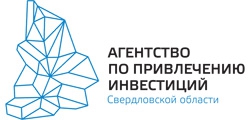На сегодняшний день Россия не имеет достаточной орбитальной группировкой дистанционного зондирования Земли (ДЗЗ), чтобы полностью обеспечивать свои потребности в космических данных. В условиях санкций западные компании больше не поставляют инфо
remote sensing equipment for domestic customers. Andrey Pirogov, a specialist in the field of geoinformatics, spoke about the state of space remote sensing of the Earth under sanctions for Russian users.
He noted that the issue of obtaining access to space data is particularly acute in the spring, when the field season begins, natural disasters occur, active navigation in the northern seas begins, construction, agricultural and forestry work is activated.
The main suppliers of ultra-high resolution images (SVR, from 30 cm to 1 meter, including artificial 15 cm) are MAXAR and Airbus. The share of South Korean KOMPSAT images is insignificant, not the last place is occupied by the supply of data from Chinese devices. The same data is supplied by the Russian satellite Resurs-P (0.7 m).
"At the moment, no foreign operator of ultra-high-resolution remote sensing space data supplies data for Russian customers. The situation with Chinese data is in limbo, data is not available from a number of satellites, in some cases orders continue to be accepted without a guarantee of supplies. The latest images from the Resurs-P spacecraft date back to September 2021 and currently a new survey from this device is not available," the expert said.
Andrey Pirogov noted that the ultra-high resolution of the survey was of a great applied nature, being used to solve various tasks in which the accuracy of determining coordinates up to several meters is needed. The SVR data were valuable due to the large volume of the survey archive, archival data is currently available only from the Resource-P (0.7 m) spacecraft, which is not enough.
According to the expert, only manned aerial photography or drones can replace the new ultra-high-resolution remote sensing data. However, satellite imagery would be significantly cheaper and more operational for remote areas.
"Are drones capable of meeting the need for SVR data? No, especially if it concerns remote territories. In addition, bureaucracy in the use of airspace and restrictions on data secrecy does not contribute to providing consumers with snapshots<...> A feature of the AFS is also the large amount of data received. Where one satellite image is sufficient, the drone will receive hundreds and thousands of images, which will require time spent on their processing, sometimes calculated in days," said Andrey Pirogov.
The second group of data is high-resolution images (from 1 to 5 meters) - it was supplied by the French company Airbus from Spot-6,7 devices. The same data was available from Chinese devices. At the moment, high-resolution images are available in the form of an archive and a new survey from the Russian satellites Canopus (2 meters) and Stork (1.5 m).
"The reorientation of consumers to Russian data is obvious, but time will tell how much the performance of the devices and the quality of the shooting will meet all needs. It is possible to replace high-resolution data with a manned survey, taking into account certain restrictions," the expert said.
As noted by Andrey Pirogov, low-resolution images (10-30 meters) presented by free Sentinel and Landsat images, actively used in agriculture and forestry. At the moment, there are restrictions on access to some services that provide this data, but they are bypassed by VPN and/or account re-registration.
Radar data has an extremely narrow niche of use. Such data are most actively used to ensure the ice wiring of vessels along the Northern Sea Route. The supply of such data and services based on them was provided by German, Italian, Spanish, and South Korean companies. Free data from the RSA Sentinel-1 satellite cannot meet the needs of users. Data from the Chinese GaoFen-3 spacecraft is also unavailable.
"Thus, the most critical situation is around ultra-high resolution data, stereo photography and radar data. As for market estimates, we don't have many companies specializing in space photography, and if the situation continues further, then, obviously, they will be forced to reduce or stop their business. Consumers of SVR data will be forced to increase the cost of shooting, switch to field surveys, or reduce the amount of work using remote sensing data," the expert concluded, noting that at the same time, Russian software developers are closing the needs for photogrammetric and thematic processing of space data.
A source: vestnik-glonass.ru











